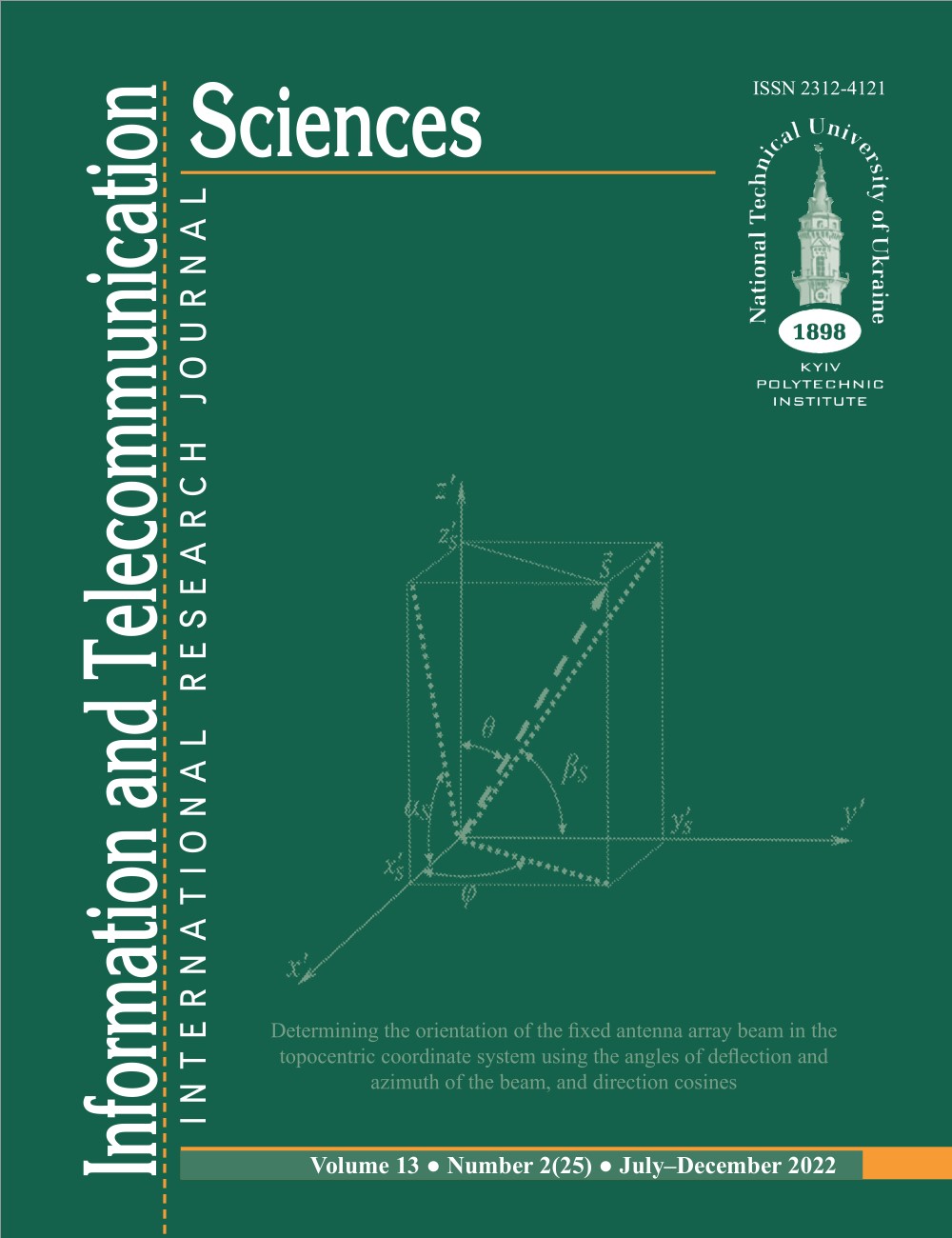NEW BARKER’s COMPOSITE CODES AS MODULATION SIGNALS IN BROADBAND COMMUNICATION SYSTEMS
DOI:
https://doi.org/10.20535/2411-2976.22022.15-20Keywords:
Barker codes, composite Barker codes, broadband communication systems, autocorrelation functionAbstract
Background. Currently noise-like signals (NLS) are widely used and provide high level of jamming immunity and security in broadband communication systems (BСS) when transmitting confidential information in an open radio channel, especially in emergencies. Increasing the efficiency of the NLS is possible when using more advanced code structures.
Objective. The purpose of this research is to study new Barker’s composite codes as modulation signals in broadband communication systems.
Method. Simulation modeling based on MatLab software package and analytical calculation methods are used.
Results. Modeling in the MatLab software package showed the possibility for using new Barker’s composite codes as modulation signals in direct spread spectrum systems but efficiency depends on code words length as well as type synchronization signal.
Conclusions. Analysis of research results shows that the new Barker composite codes 21a, 33a, 49, 77a, 121 can be effectively used as modulation code words in broadband systems with direct spectrum expansion.
References
Barker, R. H. "Group Synchronizing of Binary Digital Sequences". Communication Theory. London: Butterworth. pp. 273–287.
Volynskaya A.V. Results of mathematical modeling of the searching process of code sequences with given correlation properties. Bulletin of USURT: Scientific-technical journal. - Yekaterinburg: USURT, 2009. – № 3–4. – pp. 64–71.
Volynskaya A.V., Kalinin P.M. New noise-immune signals for the intelligent telemechanics channel // Fundamental Research №11, 2012. – pp.922-926.
Maksymov V., Khrapovitsky I. Research of composite Barker codes // The scientific heritage, № 48 (2020), Р.1, рр. 15-22.
Maksimov V.V., Khrapovitsky I.A. New Barker’s composite codes // The scientific heritage, № 49 (2020), Р.1, pp. 29 – 35;
Volodymyr Maksimov, Ihor Khrapovitsky New composite Barker codes in the synchronization system of broadband signals // Information and Telecommunication Sciences, 2020, Number 2, рр. 24-30.
Volodymyr V. Maksymov, Viktor K. Gatturov, Igor A. Khrapovitsky New composite Barker codes, Gold codes and Kasamisequences in broadband signal synchronization systems // Information and Telecommunication Sciences, 2022, Volume 14, Number 1, рр. 14-21. ISSN 2312-4121.
Maksymov V., Noskov V., Khrapovitsky I. New composite codes of Barker and codes Gold in the synchronization system of broadband signals // The scientific heritage, № 94 (2022), Р.1, рр. 110-120.
Downloads
Published
How to Cite
Issue
Section
License
Copyright (c) 2022 Volodymyr Maksymov, Vyacheslav Noskov, Igor Khrapovytsky

This work is licensed under a Creative Commons Attribution 4.0 International License.
The ownership of copyright remains with the Authors.
Authors may use their own material in other publications provided that the Journal is acknowledged as the original place of publication and National Technical University of Ukraine “Igor Sikorsky Kyiv Polytechnic Institute” as the Publisher.
ITS articles are published under Creative Commons licence:
- Authors retain copyright and grant the journal right of first publication with the work simultaneously licensed under CC BY 4.0that allows others to share the work with an acknowledgement of the work's authorship and initial publication in this journal.
- Authors are able to enter into separate, additional contractual arrangements for the non-exclusive distribution of the journal's published version of the work (e.g., post it to an institutional repository or publish it in a book), with an acknowledgement of its initial publication in this journal.
- Authors are permitted and encouraged to post their work online (e.g., in institutional repositories or on their website) prior to and during the submission process, as it can lead to productive exchanges, as well as earlier and greater citation of published work.

